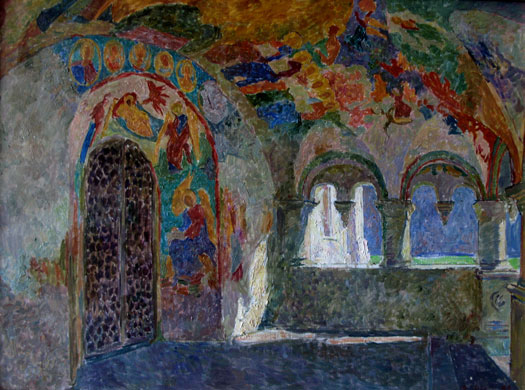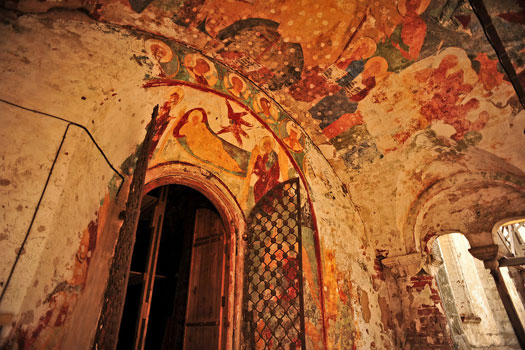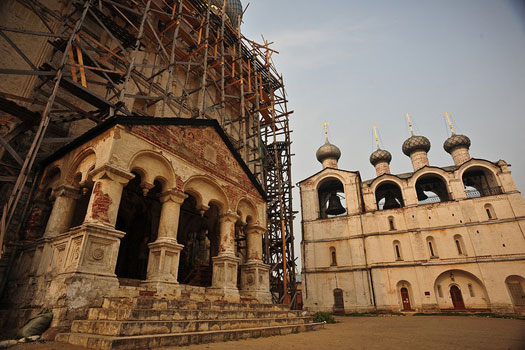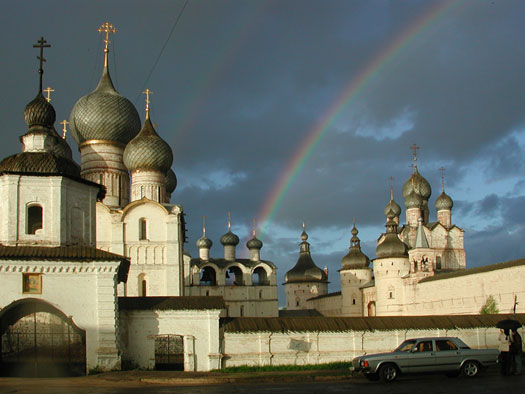Zabelin- Master of Color
Vyacheslav Nikolaivich Zabelin was born in 1935 in Khamovniki, an old region of Moscow. Zabelin was strongly influenced by the Russian world around him, yet he was particularly gifted with a rare ability to see light and color in the non-abstracted beauty of objects. His creative work is of great importance to the culture of Russia because of it's place in the history of the Moscow school of painting.
In a time when new ideas in art were being noisily proclaimed, and old masters were not being treated with their due respect, Zabelin became on of the connecting links of the painting tradition and remained a supporting stone standing firmly in the current of change. He loved Russian architecture because of it's wonderful asymmetry, and came to the realization that historical sites were quickly loosing their place and individuality.
His paintings allow us to experience the timeless ties between ancient buildings, the changeable weather, and the passing of human life. Imagery and form blend naturally in his creative work, leaving no place for superficiality. That is why his name remains in the ranks of serious masters who feel the inner essence of the painted phenomenon. As a creator of landscapes and church interiors of rhythmic and color sophistication, Zabelin is dear to Russian Art. Due to his efforts, the church interior genre in painting was revived during an era when "church-related subjects" were prohibited throughout the Soviet Union, and one had to be quite brave to paint them.

"Portal of the Assumption Cathedral (in Rostov)" 1991
Excerpt story from the Zabelin book, "Master of Color" from the artist's son, Nikita
"I visited Rostov the Great as a child many times. As an adult, I went there for the first time one summer, during my second year at the Art College. We went for an extended stay, just Dad and I. Until then we rarely spoke of painting, usually if anything he gave short critiques of my works but this time we were together all hours, painting from morning to evening. I learned during those days much about composition and painterly perception, without which one could not become a professional artist. Father opened before my eyes many secrets of the trade. I had an able master in the Art College, but few could teach with the ease and lucid logic of my father. At the very beginning of our trip, when he saw my unsuccessful attempts at painting etudes he asked, 'What is the lightest tone in the landscape?' He explained how to organize color in priority. 'Now do you see?' Soon, within the etude a clear tonal structure was built. Then I was to find the darkest and the lightest placesat once, and using them as a tuning fork, the color chords were built. From him I learned to compare the brightest color in the landscape to a lighters's flame. The flame was lost in the background of a white wall lit up by bright noon sun. Nothing would be lighter than that.
He spoke of the relationship between sunlit objects and their reflective shadows, of how to find the tone of small objects and the gaps of sky in trees. In this way, step by step, during the course of a month he taught me painting. I remember this trip well. This became the most important link to my creative development."

The Dormition or also called the Assumption Cathedral in Rostov in 2010

The Rostov Assumption Cathedral is one of the most famous in Russia. It was founded in 991, and rebuilt four times, with the current cathedral being over 500 years old. The cathedral is also famous for its bell-tower and its 15 bells. The largest bell weighs well over 70,000 pounds.

|